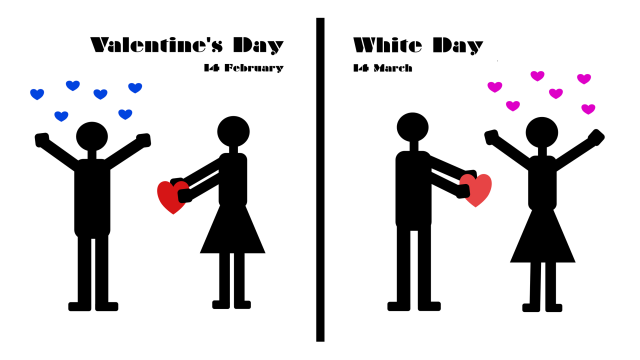Valentine's Day was first attempted to be celebrated in Japan in 1936, however it did not begin to be popularly celebrated until the 1970s, giving the day a different observation than in the West. It was primarily an opportunity for girls to show that they like a boy. In 1977, a Fukuoka-based confectionery company, Ishimuramanseido, marketed marshmallows to men on March 14, calling it Marshmallow Day. White Day was first celebrated in 1978 in Japan. It was started by the National Confectionery Industry Association as an "answer day" to Valentine's Day on the grounds that men should pay back the women who gave them chocolate and other gifts on Valentine's Day. The committee of the association who came up with the day were all middle-aged men, meeting at Keio Plaza Hotel in Tokyo.
Soon thereafter, confectionery companies began marketing white chocolate. Now, men give both white and dark chocolate, as well as other edible and non-edible gifts, such as jewelry or objects of sentimental value, or white clothing like lingerie, to women from whom they received chocolate on Valentine's Day one month earlier. Flowers and other gifts are also given on this day.
On White Day, the reverse happens. The person who received a 'honmei-choco' ('chocolate of love') or 'giri-choco'('courtesy chocolate') on Valentine's Day is expected to return the favor by giving gifts. Traditionally, popular White Day gifts are cookies, jewelry, white chocolate, white lingerie, and marshmallows.
In the latter half of the 2010s sales figures indicated a decline in popularity of the observation. It was seen as a result from the reduction of sales of obligation chocolates on Valentines Day. Another reason given for the reduction of popularity is the changing gender roles within Japanese culture.

